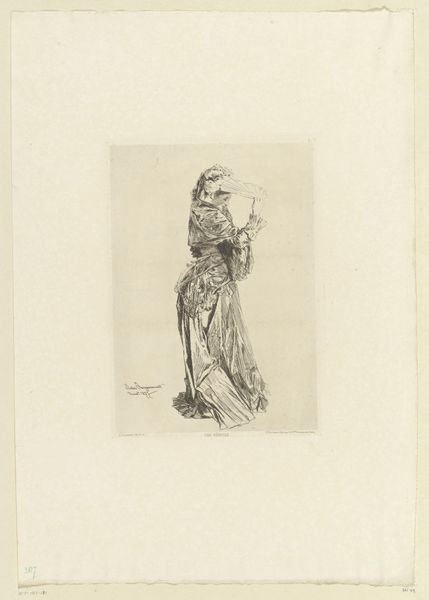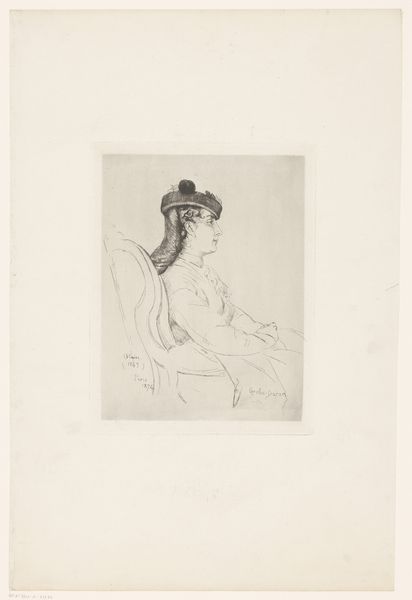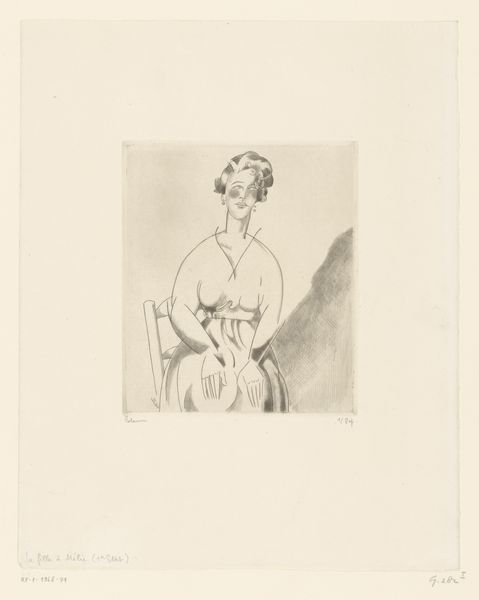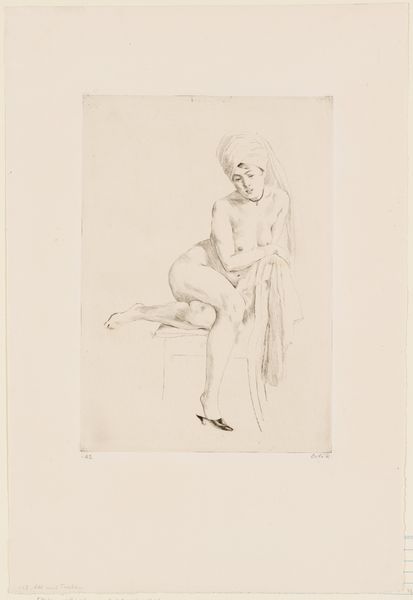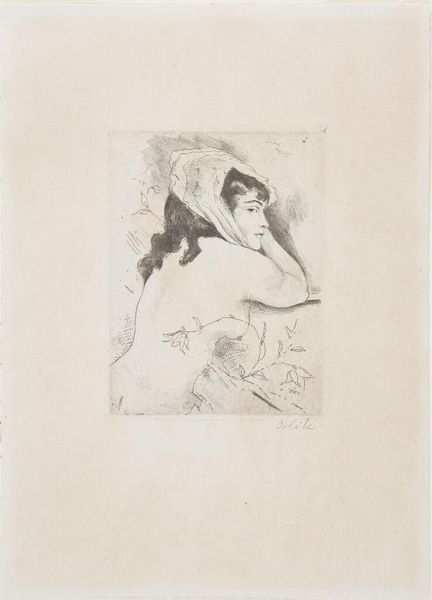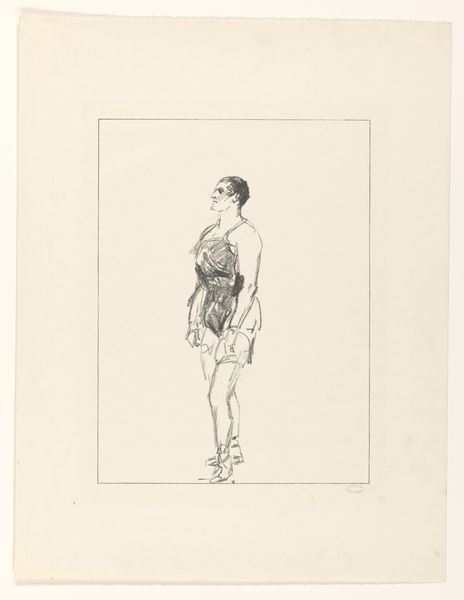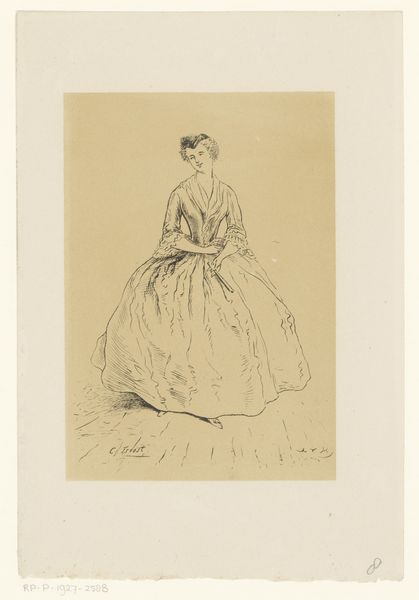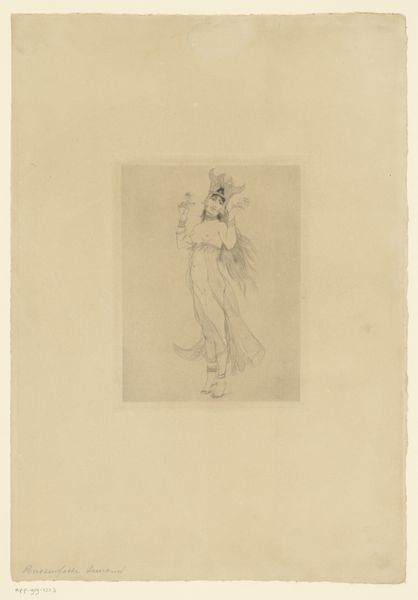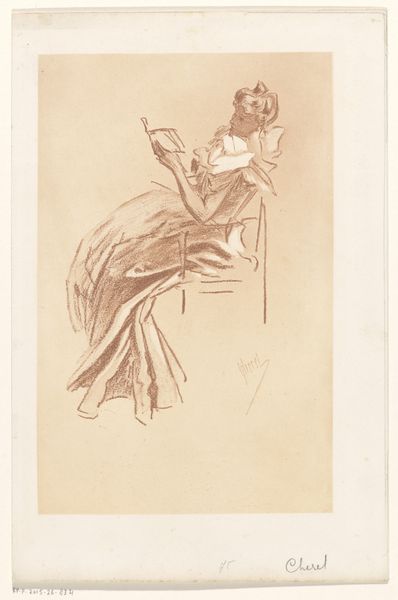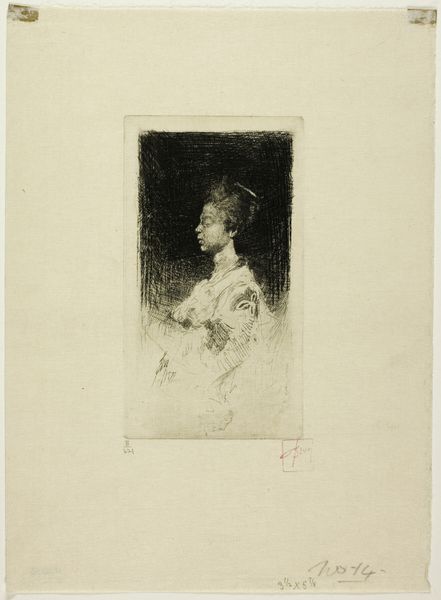
drawing, print, etching
#
portrait
#
drawing
# print
#
etching
#
pencil sketch
#
figuration
Dimensions: plate: 8 3/16 x 5 1/8 in. (20.8 x 13 cm) sheet: 11 15/16 x 8 11/16 in. (30.4 x 22.1 cm)
Copyright: Public Domain
Curator: Ernst Oppler's "Lillebil Christensen II," created around 1920, is an etching that offers a glimpse into the world of early 20th-century dance and portraiture, currently residing at The Met. Editor: It’s delicate, almost ethereal. The lightness of the lines and the way they capture the dancer’s form really give the impression of movement, a momentary pause. Curator: The portrayal of dancers in this era really touches on how women were depicted, both idealized and constrained by societal expectations. Oppler's rendering of Lillebil could be interpreted as a commentary on the performer as both a celebrated figure and objectified muse. The piece speaks to larger issues around female representation during this period, highlighting the inherent power dynamics at play. Editor: And consider the materials: an etching is a really specific process of working metal to create multiple originals. It speaks to how art was becoming more democratized—prints and reproductions made art more accessible beyond wealthy patrons. Also, note the stark contrast in the costume—that layering is achieved through specific and strategic mark-making; its fabrication also relied on the social and industrial framework supporting the ballet. Curator: Absolutely, examining this through the lens of feminist theory, we see how women’s bodies become commodities in art, perpetuating cultural narratives around femininity and beauty. However, there is agency in her gaze; there is power that demands respect despite the visual traditions from the time. Editor: The etching process allows Oppler to play with texture and shadow, emulating a kind of ghostly apparition. A lot of planning and skill goes into each one of these, even if the marks appear hasty and carefree. To know this comes from so many similar marks speaks to how images from back then differ than those generated by modern technologies. Curator: Oppler lived through times of significant upheaval and cultural transformation, so exploring this piece through his biography reveals interesting perspectives on class, identity, and cultural representation in early twentieth-century Europe. Editor: Ultimately, this small print prompts us to contemplate not only its image, but also its own labor, production, and place in society. Curator: And hopefully, too, it pushes us to reassess historical attitudes and the ever-evolving narrative of women in art and performance.
Comments
No comments
Be the first to comment and join the conversation on the ultimate creative platform.
